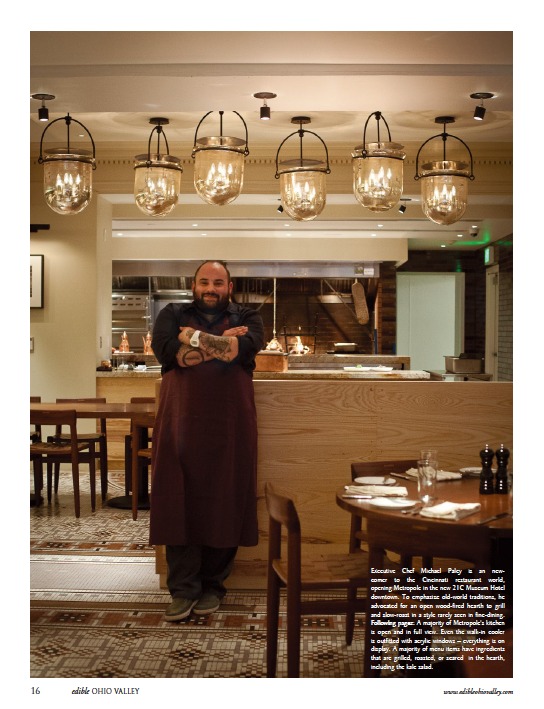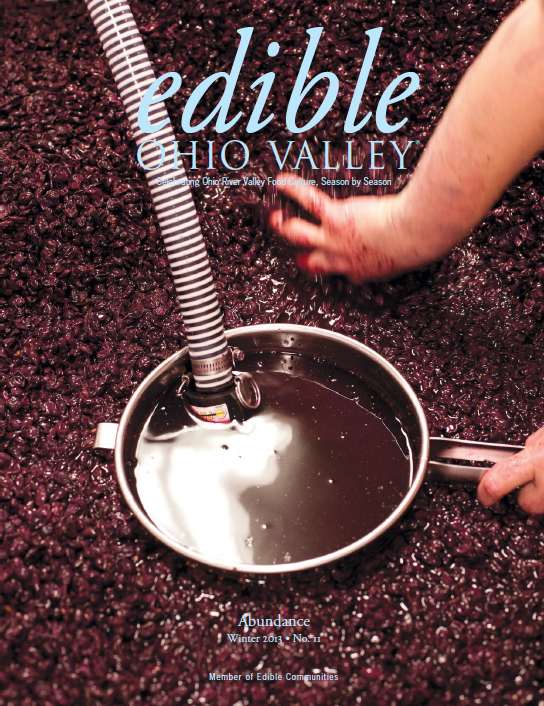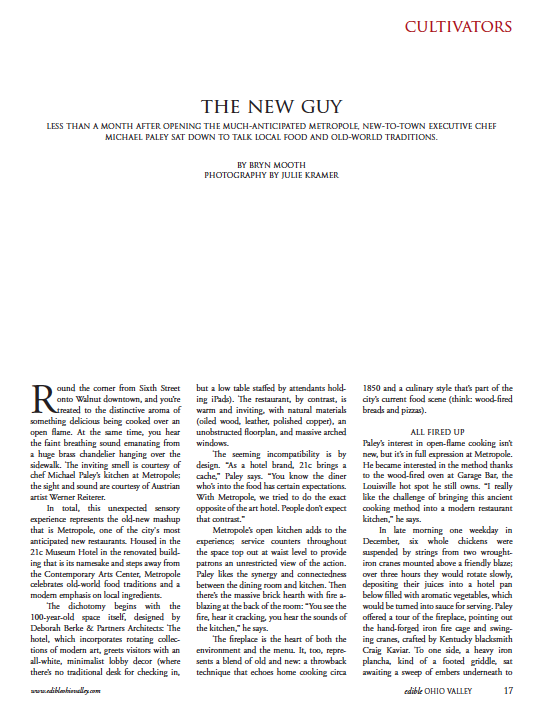Metropole is the most-anticipated restaurant debut in Cincinnati for quite awhile. I finally managed to have dinner there recently, and it was sublime. Chef Michael Paley does wonders with the freshest of ingredients prepared in the simplest of ways.
You know how difficult it is to do simple, right? If you’re a designer, you know that stripping away elements until you have the perfectly balanced composition requires discipline and finesse. As a writer, I can tell you it’s vastly easier to write 1,200 words on a topic than it is to write 200.
When I interviewed Chef Paley, he told me: “What keeps me up at night is that this stuff is way too simple. … There’s a lot of pre-work that goes into [our dishes]. I’ve sourced this really great vinegar, I’ve been through three different farmers for lettuce, we’ve got these awesome radishes that are sliced perfectly thin and even. But in the end, after all that prior work—that the diner doesn’t know about— you have a salad with three components. And you really want to make sure you’re doing that right.”
In a new profile for Edible Ohio Valley, “The New Guy,” I write about how Metropole and Chef Paley are doing simple—and awe-inspiring—things with local and seasonal ingredients in Cincinnati.
See the Winter issue of Edible Ohio Valley magazine and read the article on Metropole and Chef Paley.
Metropole’s open kitchen adds to the experience; service counters throughout the space top out at waist level to provide patrons an unrestricted view of the action. Chef Michael Paley likes the synergy and connectedness between the dining room and kitchen. And then there’s the massive brick hearth with fire a-blazing at the back of the room: “You see the fire, hear it cracking, you hear the sounds of the kitchen,” he says.
The fireplace is the heart of both the environment and the menu. It, too, represents a blend of old and new: a throwback technique that echoes home cooking circa 1850 and a culinary style that’s part of the city’s current food scene (think: wood-fired breads and pizzas).
Paley’s interest in open-flame cooking isn’t new, but it’s in full expression at Metropole. He became interested in the method thanks to the wood-fired oven at Garage Bar, the Louisville hot spot he still owns. “I really like the challenge of bringing this ancient cooking method into a modern restaurant kitchen,” he says.
In late morning one weekday in December, six whole chickens were suspended by strings from two wrought-iron cranes mounted above a friendly blaze; over three hours they would rotate slowly, depositing their juices into a hotel pan below filled with aromatic vegetables, which would be turned into sauce for serving. Paley offered a tour of the fireplace, pointing out the hand-forged iron fire cage and swinging cranes, crafted by Kentucky blacksmith Craig Kaviar. To one side, a heavy iron plancha, kind of a footed griddle, sat awaiting a sweep of embers underneath to heat it. On the other side of the cage, chefs can assemble a grill that’s also fired by the hot embers. The brick fireplace is “can be arranged as needed, like an arena gets configured for concerts or basketball games,” Paley says.
“We can run a menu off something that doesn’t need gas or electricity,” Paley continues. And he does, or nearly so: whole onions, charred and caramelized in the hot ashes, top a seasonal salad of fresh garbanzo beans and creamy burrata cheese; oysters are hearth-baked; slices of rich foie gras take a turn on the plancha, as does a savory poached pear half served on a salad of roasted beets.


